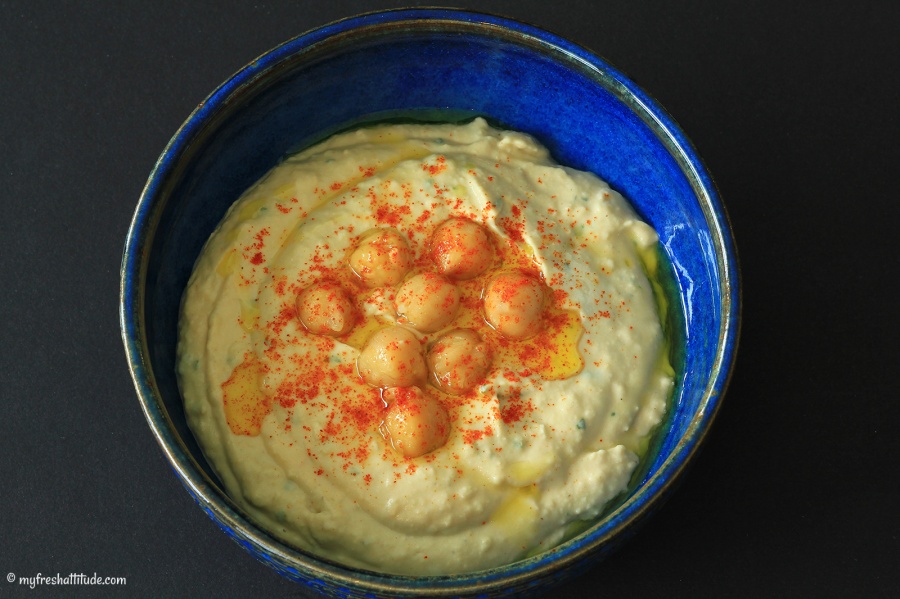
Hummus
Making your own hummus is really rather simple if you follow a couple of basic rules. Always make sure to begin puréeing your cooked chickpeas with warm cooking liquid. This will help emulsify the final mixture and incorporate all of the subsequent ingredients. Next, measure everything before you begin putting the final hummus together – start with 1/2 the garlic amount first if you don’t like it too strong. Finally, be sure to taste the hummus as you blend it and make adjustments that will suit your own taste (Too much bitter from the tahini and cumin? Add a touch
Subscription Required For This Content
Making your own hummus is really rather simple if you follow a couple of basic rules. Always make sure to begin puréeing your cooked chickpeas with warm cooking liquid. This will help emulsify the final mixture and incorporate all of the subsequent ingredients. Next, measure everything before you begin putting the final hummus together – start with 1/2 the garlic amount first if you don’t like it too strong. Finally, be sure to taste the hummus as you blend it and make adjustments that will suit your own taste (Too much bitter from the tahini and cumin? Add a touch of salt to create balance. Too much acidity from the lemon juice? Add a bit more oil to balance the acid. Too much sweetness in your hummus? Add a bit of lemon juice to create balance. Too salty? Sorry…not much you can do except be a bit more careful next time).
The ultimate success of this recipe relies on your sense of taste. The listed ingredients are guidelines and starting points. Adjust one or all the ingredients to suit your taste. Remember, after one day the intensity of the spices will increase.
For a smoother and more digestible version, purée the chickpeas and push them through a strainer, then mix as instructed. Alternatively, you can make a smooth hummus by using a blender instead of a food processor.
Yield: makes about 750 grams (1 1/2 pounds)